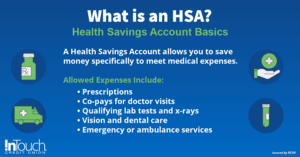What is Health Insurance?
Health insurance is a contract between an individual and an insurance company. In exchange for premium payments, the insurer agrees to cover some or all of the insured’s medical expenses. These expenses can range from routine doctor visits and prescriptions to more significant costs like surgeries and hospital stays.
Types of Health Insurance
- Private Health Insurance: Offered by private entities, these plans can be obtained through employers or purchased individually. They often provide a wide range of coverage options, including employer-sponsored plans, Health Maintenance Organizations (HMOs), and Preferred Provider Organizations (PPOs).
- Public Health Insurance: Funded by the government, these programs aim to provide coverage to specific groups. Notable examples include:
- Medicare: A federal program for individuals aged 65 and older and certain younger people with disabilities.
- Medicaid: A state and federal program offering coverage to low-income individuals and families.
- Children’s Health Insurance Program (CHIP): Provides low-cost health coverage to children in families that earn too much to qualify for Medicaid but cannot afford private insurance.
- Short-Term Health Insurance: Designed to cover gaps in coverage, such as between jobs or during waiting periods for other insurance. These plans typically offer limited benefits and are intended as a temporary solution.
Benefits of Health Insurance
- Financial Protection: Health insurance helps mitigate the financial burden of medical expenses. Without insurance, even a minor health issue can lead to significant out-of-pocket costs.
- Access to Preventive Care: Many insurance plans cover preventive services such as vaccinations, screenings, and annual check-ups, helping to detect and address health issues early.
- Comprehensive Care: Insurance often covers a broad spectrum of services, including emergency care, hospital stays, surgeries, and prescription medications, ensuring that policyholders receive the necessary treatment without undue delay.
- Mental Health Coverage: Increasingly, health insurance plans are including mental health services, recognizing the importance of mental well-being alongside physical health.
Challenges in Health Insurance
- Cost of Premiums: The rising cost of health insurance premiums can be a significant burden, especially for individuals and families without employer-sponsored plans.
- Complexity: Understanding health insurance policies can be challenging due to complex terminology, varying coverage levels, and different plan structures.
- Coverage Gaps: Not all medical expenses are covered by insurance plans. Policyholders often face deductibles, co-payments, and out-of-network charges that can add up.
- Access and Inequality: Despite public programs like Medicaid and Medicare, disparities in access to health care persist, particularly among low-income and minority populations.
Tips for Choosing the Right Health Insurance Plan
- Assess Your Needs: Consider your health care needs, including frequency of doctor visits, ongoing health conditions, and required medications.
- Compare Plans: Look at different plans side-by-side, evaluating their premiums, deductibles, out-of-pocket maximums, and network of providers.
- Check Coverage: Ensure the plan covers the services you need, including preventive care, specialist visits, and any specific treatments or medications.
- Understand the Network: Check if your preferred doctors and hospitals are in-network to avoid higher out-of-pocket costs.
- Review Prescription Coverage: If you take regular medications, make sure they are covered under the plan’s formulary.
- Utilize Resources: Use tools and resources like the Health Insurance Marketplace, state exchanges, or a licensed insurance broker to help navigate your options.
Conclusion
Health insurance is a vital tool for managing health care costs and ensuring access to necessary medical services. While selecting the right plan can be daunting, understanding the basics and evaluating your specific needs can lead to better-informed decisions. As health care continues to evolve, staying informed about insurance options and coverage changes remains essential for maintaining both financial stability and overall health.
 kisskh kisskh | Asian Dramas & Movies
kisskh kisskh | Asian Dramas & Movies



